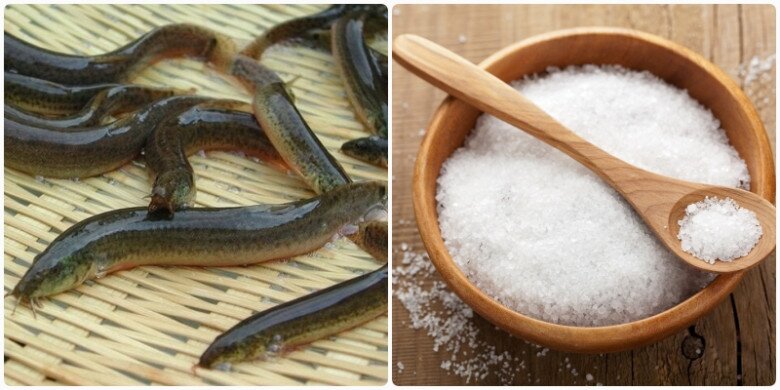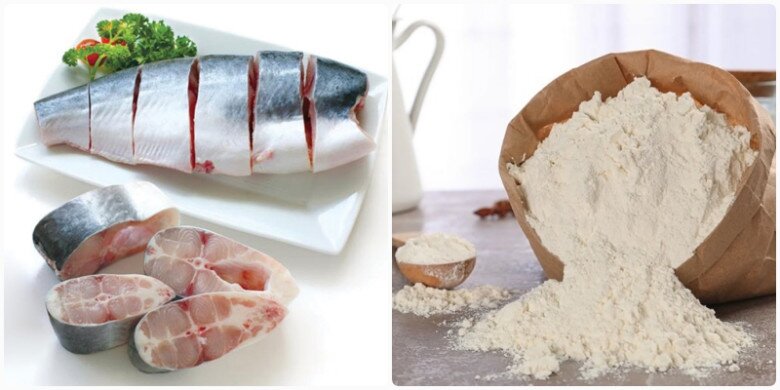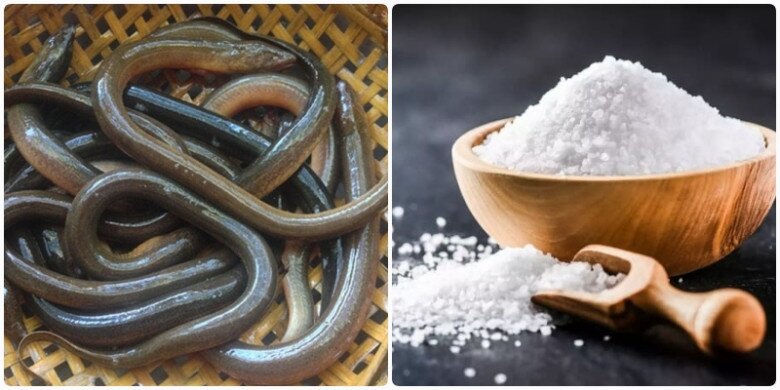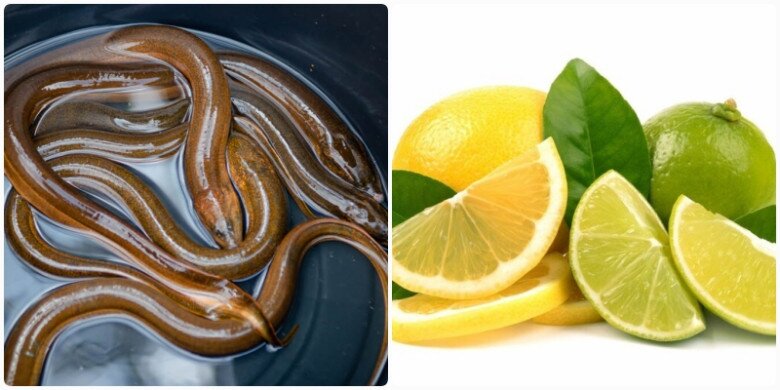1. Cleaning Catfish
Using Salt
Salt is an effective agent for removing the slime from catfish. For catfish with less slime, such as basa or snakehead fish, simply rub salt all over the fish for a few minutes and then rinse thoroughly under running water. This will significantly reduce the slime, leaving the fish clean and ready for gutting and further preparation.
For catfish with a higher amount of slime, such as mudfish, loach, or walking catfish, place the fish in a net bag, sprinkle with salt, and vigorously rub against a colander. The slime will come off, and you can then rinse the fish with water.

Using Lemon/Vinegar
Lemon and vinegar are easily accessible ingredients that can be used to clean catfish slime. After gutting the fish, place it in a colander and add a mixture of lemon juice or vinegar, along with a pinch of salt. Toss to coat evenly, and then rinse the fish with warm water for a few minutes. The slime will coagulate and can be easily washed off with water.

Using Flour
Flour is not just for baking; it’s also great for cleaning slime from catfish. You can also use cornstarch or tapioca starch for this purpose. First, rinse the fish with salt and vinegar and then with clean water. Place the fish in a basin, add just enough flour, and rub it all over the fish to absorb the slime. Finally, rinse the fish again with water to ensure it’s completely clean.

Additionally, some people use ash or banana leaves to remove the slime from catfish. However, these ingredients may be challenging to find in urban areas, so feel free to give them a try if you have access to them.
2. Dealing with Eel Slime
Using Salt
Similar to the method for catfish, place the eel in a slightly thicker plastic bag and add a handful of salt. The salt will irritate the eel, causing it to squirm and rub against the salt, helping to remove the slime. Shake the bag vigorously, and if needed, use your hands to squeeze and rub the salt onto the eel for about 2 minutes. This process will remove the slime and reduce the fishy smell. Finally, rinse the eel with warm water and pat dry with a paper towel before gutting.

Using Lemon Juice or Rice Water
In addition to salt, you can use lemon juice or rice water to clean eels. Hold the eel firmly by the head and neck, and then apply lemon juice, rubbing until all the slime is gone. Alternatively, you can soak the eel in a basin of rice water and rub it until it’s slime-free.

Using Hot Water
This method is also very effective and only requires hot water. Place the eel in a large pot or bucket with a lid. Partially open the lid and pour in hot water at about 70–80% temperature (not boiling). Close the lid quickly to avoid splashes and burns. The eel will squirm in the hot water, releasing the slime. Be sure to hold the lid tightly, as eels are strong and may try to escape. Using a deep container helps prevent the eel from pushing off the lid and jumping out.
Once the slime is gone, gut the eel, rinse it with salted water, and then cut it into sections or prepare it as desired.
Freezing the Eel
This method may be surprising, but it works! Place the eel in a plastic bag and freeze it for about 2 hours. Then, take it out, dip it in water, and use a dishwashing sponge to gently rub off the slime.
The Magic Towel Trick: Unlocking a Good Night’s Sleep with a Simple Household Hack
Introducing the ultimate hack to elevate your bathroom’s elegance and functionality: the humble towel hanger. Whether you opt for a sleek towel rack or a simple door handle hanger, this seemingly minor detail can have a significant impact on the overall ambiance of your bathroom. But why settle for ordinary when you can transform this simple act into an art form? It’s time to unleash your creativity and explore the endless possibilities that lie beyond the mundane. So, embark on this journey of discovery and witness the transformation of your bathroom into a sanctuary of style and practicality.





































